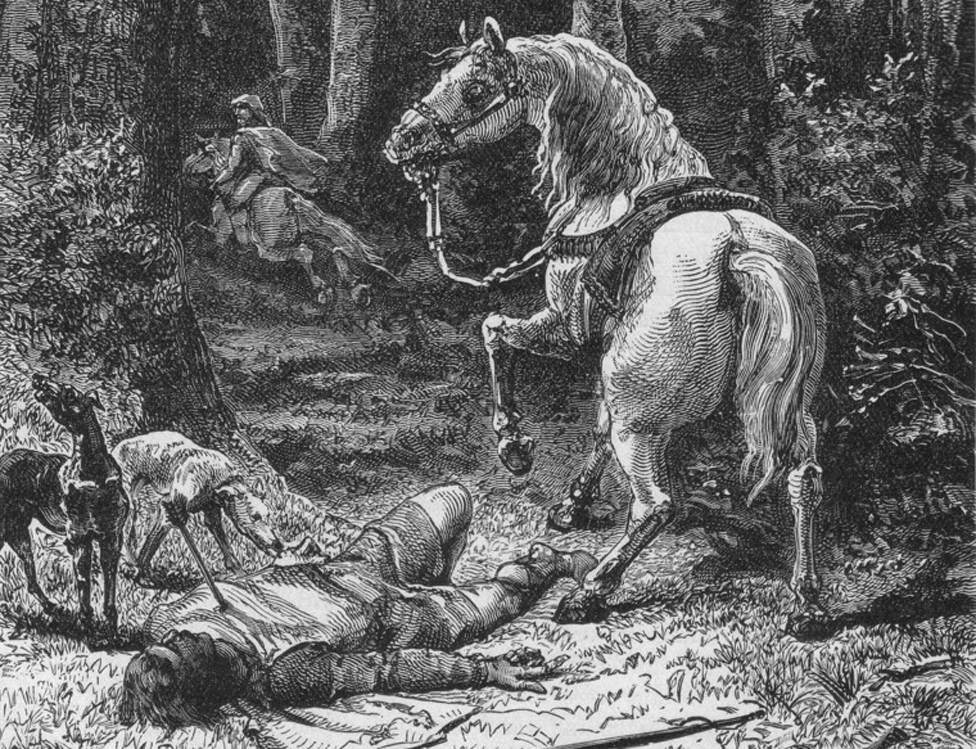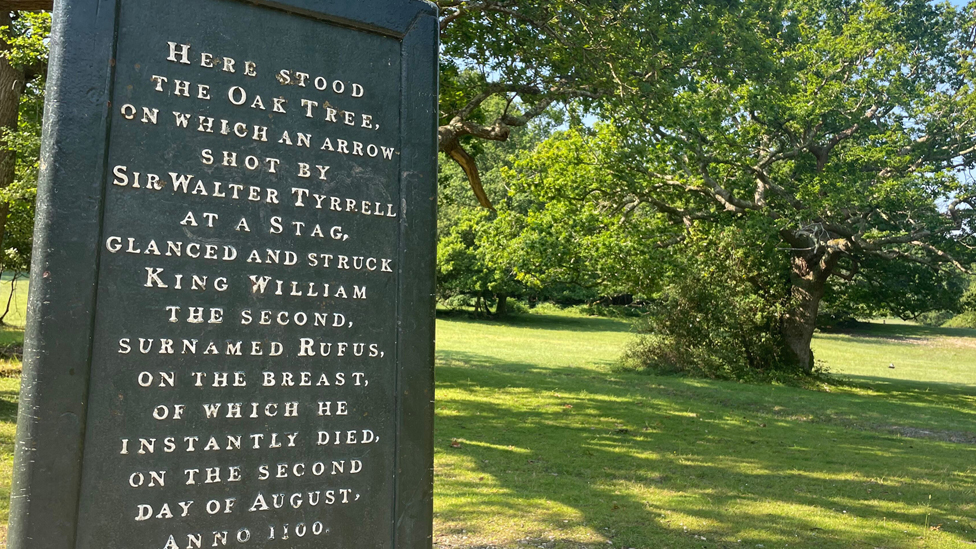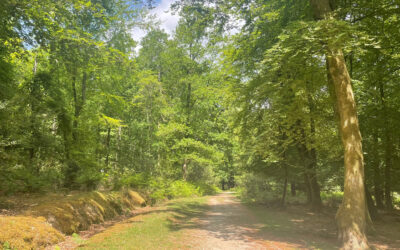Nine hundred and twenty five years ago this August, one of the most significant historical events in medieval England took place place among the trees of the New Forest.
King William II – known as Rufus – was killed while hunting in the forest on 2 August 1100.
The reputed site of the king’s death is now marked by the Rufus Stone – a rather understated monument, but a familiar landmark for passing walkers, tucked away by a quiet lane near the hamlet of Canterton.
Our Rufus Stone walk route takes you on a journey through the surrounding woods and a landscape that has changed little since Rufus’ day.
His father, William the Conquerer had established the New Forest as a vast royal hunting ground south of Winchester, known as Nova Foresta.
Rufus had succeeded to the throne in 1087 and continued his fathers’ passion for hunting.

It was on a hunting trip that tragedy struck late on 2 August 1100 when an arrow fired at a young deer by one of the royal party, Sir Walter Tyrell, glanced off an oak tree and struck the king in the chest – fatally injuring him.
While it may well have been an accident, there has long been conjecture as to whether there were more sinister circumstances.
Rufus was not a popular king – he had a fiery temper and had made a lot of enemies.
William’s younger brother Henry who was one of the hunting party, raced to Winchester to seize the treasury and was crowned king just days later by the Bishop of London.
Henry was not even next in line to the throne – his older brother Robert who governed Normandy should have inherited the crown, but Henry was crowned before Robert could arrive from France.
Sir Walter Tyrell immediately fled the scene. He is reputed to have stopped at the River Avon where he had horseshoes fitted backwards to confuse any pursuers. He eventually crossed the Channel to France. He never returned to England but always maintained the king’s death was an accident.
The king’s abandoned body, meanwhile, was picked up by a local charcoal burner, named Purkiss, and taken by cart to Winchester Cathedral. He was buried under the altar.
And as with a lot of medieval history, the exact events could have been confused in mists of time. Some historians believe the actual site of Rufus’ death could be near Beaulieu Abbey.
Today a walk taking in the Rufus Stone can be combined with a visit to one of the nearby pubs – including the Bell Inn at Brook and the Sir Walter Tyrell.



